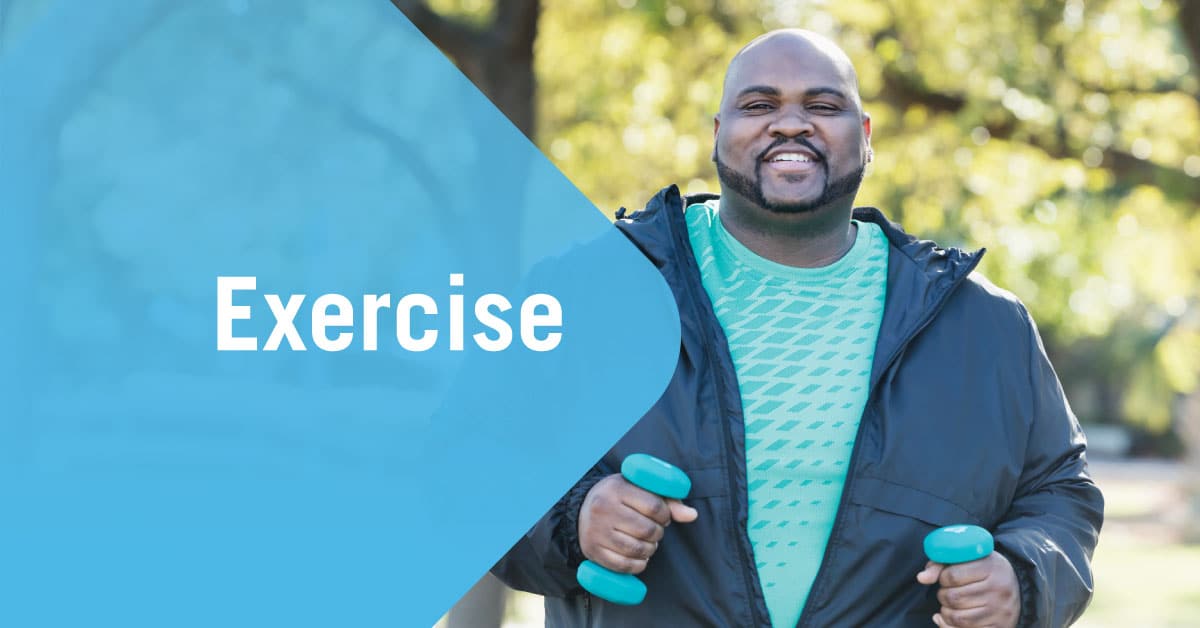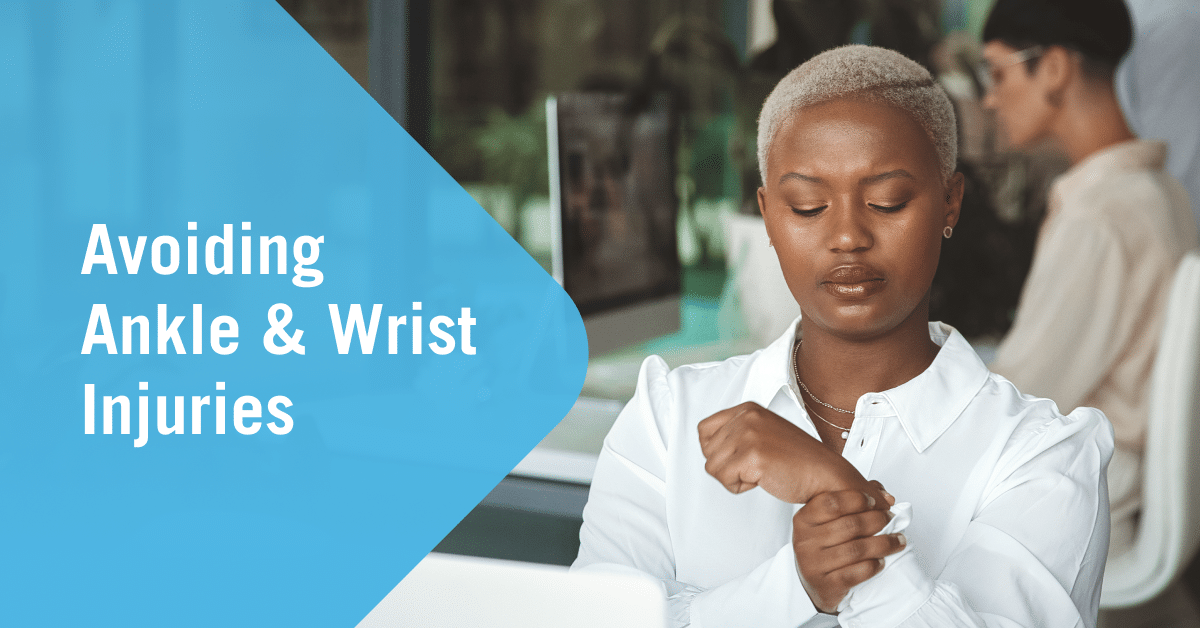When you think about the stress we put on our ankles and wrists, it’s pretty amazing how resilient those two areas of the body are. However, even the strongest joints can only take so much, and because of how we use them, wrists and ankles are two of the most injured locations in the human body.
When you do suffer a wrist or ankle injury, the key for recovery lies in knowing:
- How bad the injury is
- When to see a doctor
- What kind of treatment will help heal the joint
There are also things you can do to help prevent injury in the first place. And prevention is always better than treatment.
With that in mind, Longstreet Clinic Neuroscience & Orthopedic Center orthopedic surgeon Chris Linberg, M.D., walks us through the ins and outs of wrists and ankles and helps arm us with the knowledge that will keep your joints in great working order for years to come – as well as what to do should you find yourself in pain.
A quick anatomy lesson

The wrist is a complex area, one made up of several different joints. Where the forearm bones (radius and ulna) meet the group of eight bones known as the carpus is the wrist. Wrapped inside a band of connective tissue, there also are tendons and nerves running through this area – the carpal tunnel – and it’s possible to damage any portion of this joint.
Because of its structure, the wrist can be easily broken during a fall or other trauma. It is also prone to overuse injuries such as tendonitis, carpal tunnel syndrome and strains – which can develop slowly and become chronic or seemingly occur acutely.
Ankles, meanwhile, are comprised of the bones of the leg (tibia and fibula) and the foot (talus). These are bound together by strong “tibiofibular” ligaments and are covered in cartilage. And there are tendons present (which attach muscle to bone), including the large Achilles tendon at the back of the ankle.
Because of the force that the ankle must sustain during walking/running, it is prone to injury, including fractures and sprains. In fact, ankles are most typically injured via sprains, and this typically occurs by accidentally turning the foot inward or outward while placing force on the foot. However, ankles may also develop overuse injuries such as tendonitis (inflammation of a tendon) and stress fractures.
There are three degrees of ankle sprains:
- First Degree: Ligaments connecting the bones of the ankle are stretched but not torn, with little swelling and no instability. Typical recovery time: 1-2 weeks.
- Second Degree: Ankle ligaments are partially torn and the ankle usually swells quickly. There is mild instability, and pain that comes with any weight bearing. Typical recovery time: 3-6 weeks.
- Third Degree: A serious tear of ligaments, typically with with severe pain, swelling, and bruising. Typical recovery time: 6-12 months.
“Wrist and ankle injuries are very common, especially with active individuals and athletes – but they are also common in the elderly and those people prone to falls,” Dr. Linberg said. “What we most commonly see are broken wrists and ankles, but we also see lots of tendinitis in the wrists – especially in the thumb side – from overuse. For example, when new mothers start lifting their babies for the first time, they can often overdo it. We also see a lot of problems with cartilage in ankles and tendinitis there too.”
How bad is your injury?
Say you’re out on the basketball court and come down on the side of your ankle. Or your elderly mother takes a spill and catches herself with her hand, jamming the wrist. These are very common occurrences that most often result in sprains – but they could also cause fractures, and the pain is so similar that it’s not always to tell exactly how bad it is.
So, how do you know the difference? And when should you see a doctor?
For Dr. Linberg, it’s always better to know.
“If you suffer trauma to your wrist or ankle and experience moderate to severe pain, swelling, or bruising, the best thing to do, the safest thing to do, is to be evaluated by a medical professional as soon as possible,” Dr. Linberg said. “You may think it’s just a sprain, but you could have broken bones, and only an X-ray will be able to tell for certain. And by ignoring the pain or trying to work through it, you could end up doing worse damage.”
Once you see a doctor, you will also be to determine exactly how long your recovery period might be. It could last as long as few days or up to a few months. But only a medical professional will be able to give you a clear picture.
“Bad ankle sprains require weeks, sometimes months to get better. So, it may even seem like you’ve broken it when you’ve just badly sprained it,” Dr. Linberg said. “And knowing is always better.”
Getting back to full health
If you do suffer from pain in your wrists and ankles – either from trauma or overuse – the good news is that rest typically cures the problem. Always stick to the RICE acronym after any trauma or recurring pain.
- Rest – Do not work an injured joint.
- Ice – For 15 to 20 minutes every 1 to 2 hours during the first 48 hours after your injury.
- Compression – An elastic band can decrease swelling. Do not sleep with your joint wrapped.
- Elevation – Keeping your ankle or wrist above the level of heart as much as possible will decrease swelling and pain.
You can also take over the counter pain medications – ideally anti-inflammatories such as ibuprofen or naproxen if appropriate.
If you see a doctor for your wrist or ankle concern, he or she will likely prescribe a round of physical therapy to help you recover and strengthen the joint in question – which will help prevent recurrence of the injury.
Wrist & Ankle stretches
There are many stretches and exercises you can undertake at home to help relieve some of the problems.
Wrist stretches
- Prayer stretch
Start with hands in a prayer position, slightly below your chin, and slowly move your hands towards your belly button till you feel a stretch in your forearms and wrist. Hold for 30 seconds and repeat 3-5 times.
- Wrist extensor stretch
Extend both arms and make two fists but roll your knuckles toward the ground as much as possible. Next, move your fists downward, while keeping your arms straight. Hold for 10 seconds and repeat once.
- Wrist flexor stretch
Put both arms out in front, extend the palm and fingers of one hand like you’re making a “stop” sign. With your other hand, pull the fingers back and hold for 10 seconds. Reverse hands and do the same; repeat three times.
- Wrist rotation
Extend one arm in front of you with the forearm facing up. Extend the hands and fingers toward the floor. With your other hand, pull your fingers down and hold for 5 seconds. Reverse hands and do the same; repeat three times.
Ankle exercises
Ankle therapy starts with range of motion therapy, which decreases swelling and promotes blood flow. Start this on the day of your injury by moving your ankle straight up and down 10 times an hour. When you can do this without pain, move on to drawing the alphabet with your big toe.
You can progress from there with stretching and even isometric exercises and heel raises to strengthen the joint – all of which must be performed with NO PAIN. For stretching, keep your knees straight and heels on the floor and then lean forward against a wall until you feel a stretch in your calf muscles. Hold for about 20 seconds. Do not bounce. You can then do the same stretch with your knees slightly bent to stretch your Achilles tendon.
Heel raises are just what they sound like. Start with both feet on the floor, holding onto a fixed object for balance. Raise your heels from the floor and then slowly lower. Go as high as you can without pain. Try to do 2 or 3 sets of 10 repetitions.
How to avoid wrist/ankle problems
Avoiding wrist and ankle injury is always better than trying to recover from them. To that end, Dr. Linberg recommends a few procedures and lifestyle adjustments.
“For active people, the best thing you can do to help avoid wrist and ankle problems is to wear protective equipment – especially young athletes. That means that for some sports you can wear braces or wrist guards – especially if they’re into skateboarding. Taping can also be hugely helpful in supporting wrists and ankles during any contact sport,” Dr. Linberg said.
“Ankles are prone to injury in any sport where you run and cut – such as tennis, soccer, football, basketball – so be sure to have good, supportive footwear,” he added. “You should also try to strengthen and stretch those areas regularly to help prevent injury.”
You can undertake the exercises and stretches listed above as preventive measures. It’s also important to listen to your body and know that if your ankles or wrists are sore for any length of time that you should assess your actions and see if you can alter what you’re doing. Be mindful of any pain and stop as soon as possible if it gets worse.
“For older patients, and those prone to falls, the best thing you can do is see a physical therapist for help with your balance. You should also make sure there are no tripping hazards in your home and that you’re wearing the right footwear,” Dr. Linberg said.
For those, who sit at a desk and work on a computer all day, there are also things you can do to improve your wrist health, such as using an ergonomic keyboard, mouse, mousepad, or wrist cushion.
Talk to a provider
There is no reason that you should suffer with ankle and/or wrist pain. Modern approaches to acute pain and therapy can handle even the worst trauma or recurring pain. However, you need to be ready to talk with a professional care provider to receive the most targeted treatment.
The caring team at Longstreet Clinic’s Neuroscience & Orthopedic Center is ready to help at any time. Our award-winning care providers understand where and how to locate the source of your wrist and/or ankle concern – and determine a lasting solution.
And because of the innovative setup at the Neuroscience & Orthopedic Center, a team of care providers allows you to experience all levels of care in one convenient location. This means that doctors, surgeons, pain management specialists, imaging specialists, and physical therapists all work in concert to provide the patient with the optimum result.
To get on top of your wrist and ankle concerns, call us today at 678-207-4100 or learn more by visiting the Neuroscience & Orthopedic Center.







